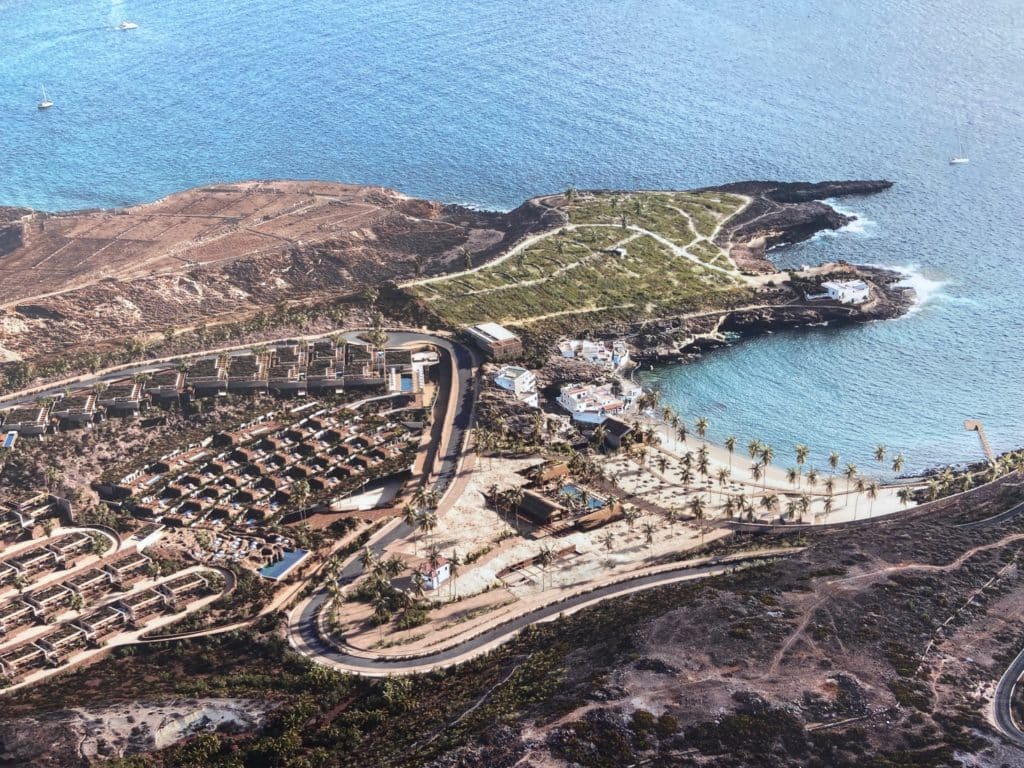Some time ago, around half a century ago, from Fañabé to Armeñime there were tomato plantations and some banana plantations, between La Caleta and Alcalá you could catch clams. Health tourism first came to Los Cristianos, then Santiago Puig (father and son) created Playa de Las Américas and thus mass tourism spread, replacing farms and greenhouses first with large buildings, then with bungalows on the hills and in the recent years with large five-star hotels, from Arona to Santiago del Teide, all creating artificial beaches on the coast.
Back then neither the beetles, nor the barley fields, nor that left-wing wave for surfers in El Camisón, nor that there were any Guanche deposits mattered. Those were other times and everyone embraced the progress of the south through the new industry that began to prevail in the sixties along the entire Spanish coast.
Now, with figures that exceed fifteen million tourists a year in the Canary Islands, more than five in Tenerife alone, we wonder if our territory is capable of continuing to grow in tourist beds, if there is still capacity to continue growing. And all this under an environmental awareness that has increased considerably in this century, which has also led to a tightening of the EID (Environmental Impact Statement) that has rendered projects such as the Punta de Abona hotel complex or the port of Fonsalía null and void, least for now.
However, one does not cease to be surprised that these same ecologists do not show their rejection of the proliferation on the coast, in some cases even in natural areas of environmental protection, of slums built from shacks, pallets or old caravans, either on private or public land, on top of slopes, in the middle of a ravine or right on the beach, as has happened in Arico, Granadilla, Arona or Adeje. It is paradoxical that those same ecologists who today have a camp to prevent the works of the Cradle of the Soul macroproject do not say a single word about all those illegal buildings that can be seen from the beginning of the road to the beach of El Puertito de Adeje. A degradation of the territory that one has not heard of those who oppose a hotel complex that, with the Law in hand, has received all the congratulations since 2018 to build villas and apartments in 400,000 square meters, with the obligation to urbanize the area, even maintaining the 22 homes that currently exist in that coastal area between La Caleta and Callao Salvaje. It is not surprising, therefore, that the majority of residents are in favor of Cuna del Alma -87% according to the City Council-, although some who say they are against what they want is more money, such as the owners of an old ship of tomatoes right at the entrance to the beach that prevents you from seeing all its beauty.
City Hall
Manuel Luis Méndez, the councilor for Urban Planning, on the Cuna del Alma project, points out that “the Government of the Canary Islands has said it and the Cabildo has said it, there are no legal reasons to stop the project. The file has been done as all the procedures mark and has been processed for more than 8 years in which it has been supervised and monitored by different organizations and public officials. The City Council of Adeje has the duty and obligation to protect the legality and current regulations. This project has passed all the filters, not only from the City Council but from the rest of the administrations involved, therefore we cannot act capriciously or irresponsibly without taking these circumstances into account”.
And regarding the encampment of environmentalists who are trying to stop the works, he asks for “tranquility and calm from the people who are against the project. You cannot lose respect or act disproportionately or violently against private property or against the right to work. We live in a state of law and whoever does not agree with something has democratic and legal ways and channels to express their opinion and reverse the situation.”
The only discordant voice on the Cuna del Alma project, in the Adeje City Council, is represented by Gabriel González, councilor for Podemos, who has requested the resignation of Manuel Luis Méndez, after learning of the opening of a sanctioning file by the General Directorate Cultural Heritage with an amount of 600,000 euros. For González, it is a very serious situation that “was seen to come from afar”, since the municipality of Adeje lacks the protection instruments that the legislation requires it to develop.
















